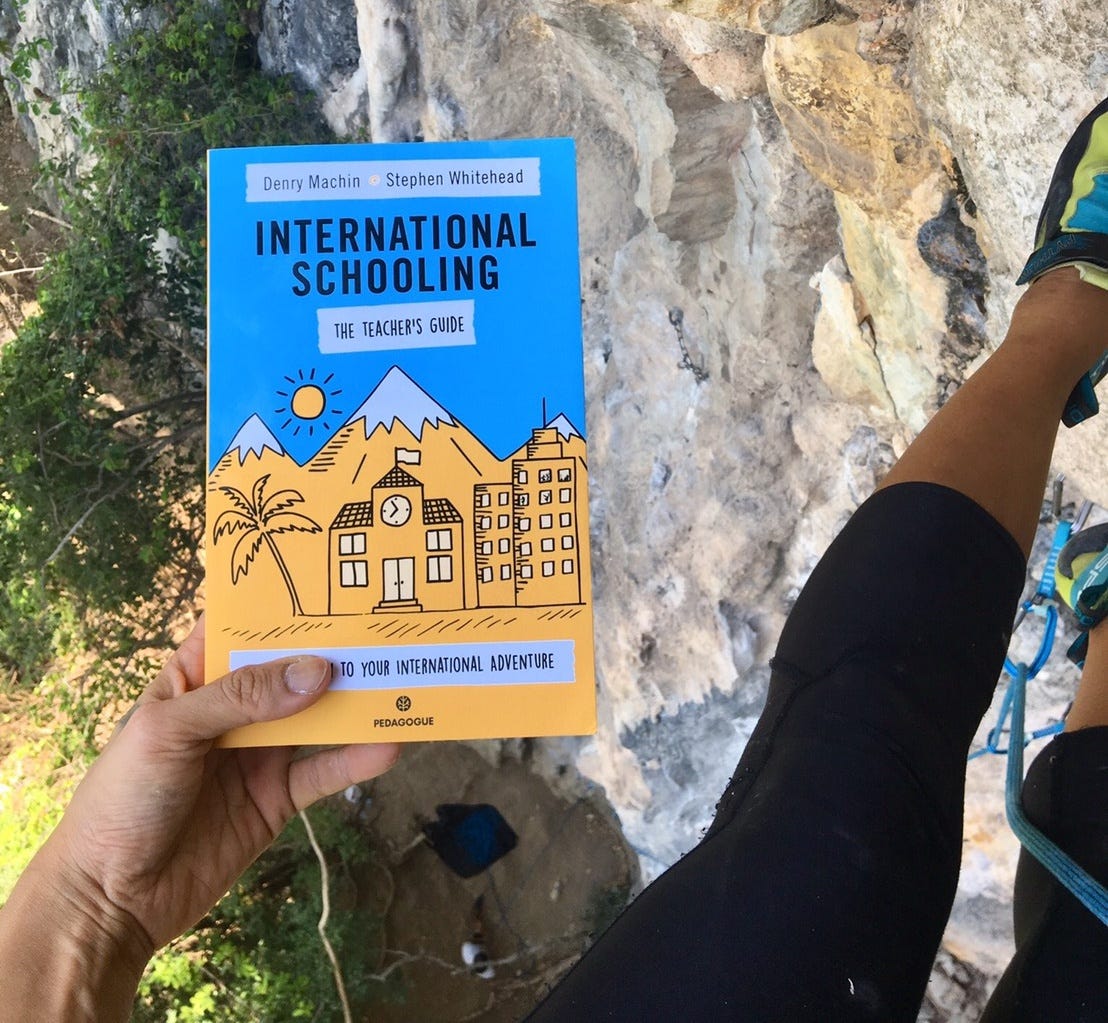International School Principals:
Routes to headship and key challenges of their role
Authors: Lucy Bailey and Mark Gibson (Bahrain Teachers College)
Digest by: Dr Stephen Whitehead
Are leaders born, or are leaders made?
How you answer that question reveals a lot about you.
Certainly, as an educationalist you must believe that leaders are made, otherwise what is the purpose of educating young people into leadership if you assume they already have Leadership DNA inscribed in them at birth?
Once we accept that leadership is an evolving condition with no distinguishable beginning, predictable process, nor pre-determined end, then it is beholden on the researcher, and indeed school SMT/owners, to understand this complex, changing, role in more detail.
And how better to understand international school leadership than by talking to international school leaders?
Which is the precise purpose of the article we present a digest of.
Not that there is a shortage of research and writings on leadership, nor especially school leadership. University libraries around the world are packed with such tomes. But when it comes to international school leaders/leadership, in some regards the most rapidly expanding area of global professional leadership, then there is more mystery than substance.
“Very little has been written about how international school leaders are prepared for their roles; this may be because there is insufficient understanding about the nature of international school headship, and how this differs from school leadership in national settings.” (p. 1007)
This accurate observation reminds us of the central impulse within global educational career advancement, which is that good teachers get promoted to management and then on to leadership, often experiencing a steady decline in their professional ability and effectiveness as they move from managing children to managing adult professionals.
Which is a warning to any school leaders working in state education systems – don’t assume that what works in your national setting is going to work in an international school. Expect a steep learning curve.
Just how steep a learning curve is revealed in the research informing this article.
Methodology and Research Aims
Twelve Principals of international schools in Malaysia were interviewed in 2018. The semi-structured interviews aimed to explore the nature of Headship in international schools, and the routes that leaders take towards senior leadership of international schools.
1. What are the routes to Headship, including leadership preparation, followed by international school Principals in Malaysia?
2. What are the leadership challenges that face international school Principals in Malaysia?
At this point it is worth recognising two key aspects of this study.
Firstly, it was conducted long before covid-19 impacted on international school leaders and their schools. Secondly, the variable ‘Malaysia context’ means that some aspects of the findings may not be readily transferable to other settings/countries/cultures.
Of course, one variable that is common to both Malaysia and a host of other countries around the world, at least when it comes to international schools, is growth. Following the relaxing of government regulations preventing most Malaysian from using international schools, the number of such establishments has risen dramatically.
In 2018, when this study was undertaken there were 241 international schools in Malaysia and according to ISC research more schools are opening every year, driven by a phenomenal 44% international school market growth from 2015 to 2020. All of which places means increasing number of job opportunities for those individuals seeking international school leadership positions.
Routes to Headship?
I’ve always been sceptical of ‘five-year business plans’.
Having spent fifty years working as a manager for private sector corporations, Further Education colleges, universities, and running my own educational consultancy, I have yet to see any such plan coming to fruition. And, so it is with ‘career plans’ – their impotence and pointlessness proven (yet again) in this study.
“Our 12 participants had taken divergent paths towards international school leadership…[three]…had been Principals in their home countries…the remainder had become Principals in the international school world. When they described their path towards leadership, a clear plan or active development by others was markedly absent. Rather, several of our participants had simply seen new interesting challenges which caused them to move incrementally.” (p. 1013)
And this is one of the major outcomes of this study – that there is no clearly defined route to international school leadership.
“Our data suggests that international schools lack a strong leadership pipeline that enables identification of early leadership potential and its cultivation throughout an individual’s career.” (p.1013)
Don’t you think that is rather remise of forward-looking international school owners? Not if you know anything about international schooling. If you do, you’ll know very well why that pipeline, or leadership development programme, is conspicuous by its absence.
“The geographical mobility of individuals in international schools perhaps explains why each school may feel they are not going to benefit from investment in future leaders: the consequence is, however, to impoverish the leadership capacity of the sector in general.” (p. 1013)
‘Impoverish leadership capacity”, not many international school Heads will be pleased to read that.
Yet how many times have I heard international school owners suggest to me that it is not in their best interests to provide PD in leadership for their most promising teachers and managers?
Sadly, many times.
They are fearful of ending up benefiting a rival school, not their own.
One clear outcome of this lack of investment by school owners in international school leaders is that aspiring leaders end up having to do it themselves. And in this study, many did just that with most of the participants completing some kind of leadership qualification prior to becoming an international school leader, e.g. NPQH, MA in Education, MA in educational leadership or similar.
As this study indicates, to rise to the top, aspiring international school leaders have to become agentic, enterprising, reflective and entrepreneurial. As I put in my co-authored book ‘International Schooling: The Teacher’s Guide’ – they have to become ‘educational nomads’:
“Educational nomads are professional educationalists…they are multicultural internationalists who long ago left home and embarked on their existential adventure.” (p. 283)
This put a lot of emphasis, if not pressure, on the international school teacher/leader to carve out their own path through the career jungle, armed not with any map, plan, or clear direction, but simple determination to keep going - hopefully while enjoying most of the adventure.
“Many participants argued that learning from experience was essential: indeed, this was often claimed to be the most important form of preparation. Most of them had few opportunities for formal feedback from anyone in their organisation, and argued that applying the skill of self-reflection was essential.” (p. 1015)
Self-determining, self-reflecting, self-confident, self-actualising, self-analysing, these are the characteristics which it seems any international school leader hoping to rise to the top and survive, needs.
All well and good, though it does come at a price.
Key Challenges of International School Leadership
Loneliness: Not only is the institution isolated, at least from your family and familiar cultural background, as leader you too are isolated. Being the leader is always lonely, but maybe international school leadership is the loneliest of all educational jobs?
Transience: Short-term contracts, high staff turnover, living out of a suitcase, all the temporality which comes with uprooting yourself and perhaps your family, to live overseas. And it’s not as if the contracts are for life – two years is the norm.
Cultural differences: As I say in my latest book, “if your idea of cultural experimentation is a Chinese takeaway, then maybe international schooling isn’t for you.’ (p. 106)
Governance: Do you know what the most common reason for an international school leader quitting is? Well, it is the school board – specifically either changes to the board composition or micro-managing by the board. Sound familiar?
Now don’t say you’ve not been warned.
If you are serious about leading an international school then you better be aware you are running a business first, school second. Sorry, but that is the reality of it. In other words, look like a school Head, but act and sound like a CEO when you have to.
Managing school composition: Whoever said multicultural organisations were easy to manage and lead clearly never has done. Add in the multicultural dynamics of the classroom and parents and it can all make for a very confusing, if not combustible, situation.
Conclusion
It has often struck me that the international school world is like a rumbustious teenager – growing too quickly; rather stroppy with it; has no real idea what happens next but thinks it has all the answers; doesn’t like to be told what to do; and has far too many hormones for its own good.
But there you go.
Eventually it will grow up, settle down, mature, and end up being like every other professional sector – predictable and rather boring, if not fully corporatised.
Meanwhile, good luck to all those brave and hardy individuals (school leaders) who’ve taken on the task of trying to guide this intransigent teenager into the future.
Digest by: Dr Stephen Whitehead
reference
Bailey, L. and Gibson, M. T. (2020) ‘International school principals: Routes to headship and key challenges of their role’, Educational Management Administration & Leadership, 48(6), pp. 1007–1025.
link
https://journals.sagepub.com/doi/10.1177/1741143219884686
INTERESTED IN INTERNATIONAL EDUCATION?
The Teacher’s Guide is getting around!
Seen here up a cliff face in Thailand. When we said ‘a companion to your international adventure’ we didn’t quite mean literally!
Grab a copy to take on your own adventure or listen to a short sample here (4 mins).






